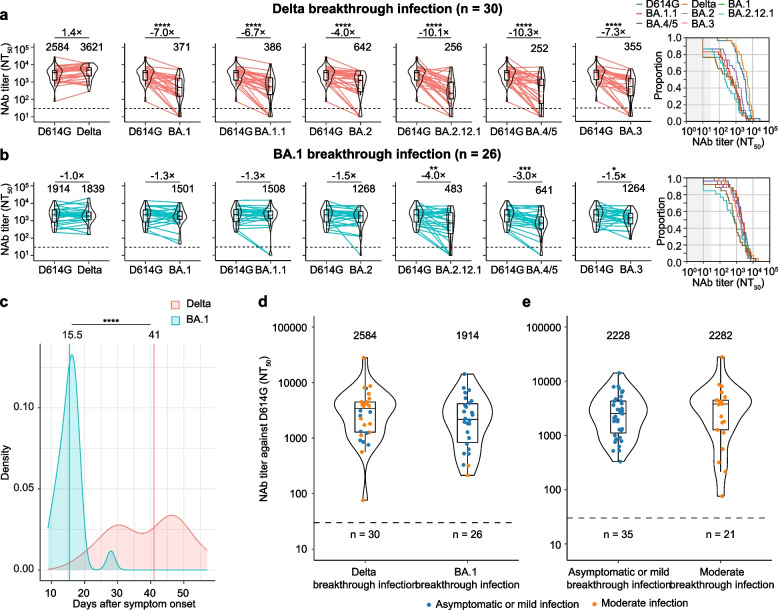Fig. 2.
Neutralizing antibody levels in Delta and Omicron BA.1 breakthrough infections. a Box-violin plots of neutralizing antibody titers against Delta and Omicron subvariants compared to D614G, along with cumulative distribution function plots of titers against D614G, Delta, and Omicron subvariant (right), showing the proportion of samples at or above a given titer, in patients with Delta breakthrough infection. b Corresponding plots in patients with Omicron breakthrough infection using a pseudovirus neutralization assay. c Kernel density plot shows the distribution of collection days for samples from Delta and Omicron BA.1 breakthrough infections. All individuals with breakthrough infection in the study and available samples were collected 9–57 days after symptom onset or SARS-CoV-2 PCR test positivity when discharged from the hospital. d Box-violin plot showing pseudovirus-neutralizing antibody titers against D614G between Delta and Omicron BA.1 breakthrough infections. e Box-violin plot of pseudovirus-neutralizing antibody titers against D614G between asymptomatic or mild and moderate-severe breakthrough infections. For the box-violin plots, the median is represented by the thick black line inside the box. The geomatic mean titers (GMTs) are shown above each column for a, b, d, and e. The fold change of GMT is displayed in a and b. The horizontal dotted line represents the limit of detection of 30. A two-tailed Friedman test with a false discovery rate for multiple comparisons was performed to compare Delta and Omicron subvariants to D614G in a and b, and a two-tailed Wilcoxon rank-sum test was performed in c–e. p values are represented as ****p < 0.0001. No asterisk indicates no statistical significance

